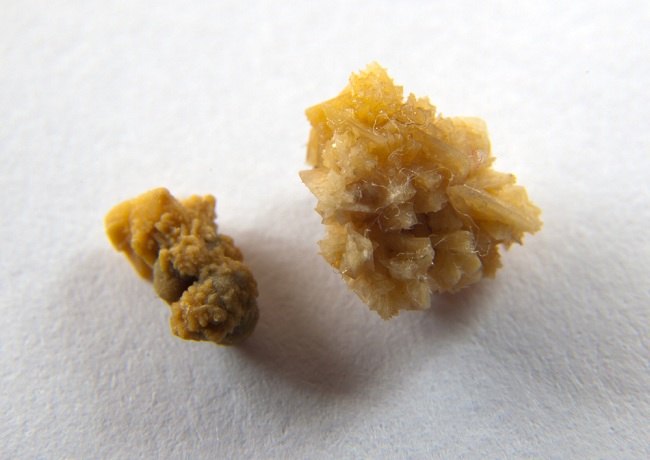A subarachnoid hemorrhage is a buildup of blood within the protective lining of the brain. This condition is generally characterized by severe headaches that occur suddenly.
Subarachnoid hemorrhage or subarachnoid hemorrhage (SAH) can occur spontaneously without a head injury. This condition is most often caused by a brain aneurysm, which is a bulge in an artery caused by a thinning blood vessel wall.

Patients with subarachnoid hemorrhage should seek medical attention immediately. If not, this condition is at risk of causing permanent brain damage, it can even be life threatening.
Causes of Subarachnoid Hemorrhage
The brain membrane (meninges) is a protective layer of the brain consisting of the dura mater, arachnoid and pia mater layers. The subarachnoid space is located between the arachnoid and pia mater layers.
The subarachnoid space contains fluid that protects the brain. In the subarachnoid space there are many blood vessels that play a role in carrying nutrients and oxygen to the brain.
Subarachnoid hemorrhage can be divided into two, namely traumatic and non-traumatic. Here is the explanation:
Traumatic subarachnoid hemorrhage
Traumatic subarachnoid hemorrhage occurs as a result of a severe head injury, for example from a traffic accident. A severe head injury can cause a blood vessel in the lining of the brain to rupture and result in a subarachnoid hemorrhage.
Nontraumatic subarachnoid hemorrhage
Nontraumatic subarachnoid hemorrhage occurs spontaneously, for example, rupture of a blood vessel due to a brain aneurysm. Aneurysms in the blood vessels of the brain cause the walls of the blood vessels to thin and form a very fragile bulge.
Nontraumatic subarachnoid hemorrhage can also occur due to bleeding from arteriovenous malformations, consumption of blood-thinning drugs, blood clotting disorders, infections, and complications due to bleeding within the brain that leaks into the subarachnoid space.
Risk factors for subarachnoid hemorrhage
Subarachnoid hemorrhage can occur in all age groups. In fact, some people are born with a brain aneurysm that can cause this condition. In addition, there are several other factors that increase the risk of aneurysms, namely:
- Smoking habit
- High blood pressure
- Alcohol addiction
- Family history of aneurysms
- Polycystic kidney disease
- liver disease
- Brain tumors, both malignant and benign, affecting the blood vessels
- Encephalitis
- Fibromuscular dysplasia or abnormal growths in the walls of blood vessels
- Moyamoya disease, which is a rare condition that causes blockages in the blood vessels in the brain
- Vasculitis
Symptoms of Subarachnoid Hemorrhage
The main symptom that arises from a subarachnoid hemorrhage is a severe headache that appears suddenly and has never been felt before. Other symptoms include:
- Dizziness, confusion, and weakness all of a sudden
- Neck feels stiff
- Shoulder and back pain
- Nausea and vomiting
- Blurred, double vision, or sensitivity to light
- Experiencing stroke symptoms, such as slurred speech and paralysis on one side of the body
- Loss of consciousness
- Seizures
- Sleep disturbance
- Depression
When to go to the doctor
Symptoms of subarachnoid hemorrhage can appear suddenly and cause the sufferer to experience a rapid loss of consciousness. This condition is classified as an emergency and requires immediate medical attention.
If you see someone showing signs of a subarachnoid hemorrhage as above, seek help from a doctor or medical officer immediately.
Diagnosis of subarachnoid hemorrhage
The doctor will ask about the symptoms experienced by the patient, especially complaints of severe headaches, visual disturbances, and a stiff neck as the main symptoms of subarachnoid hemorrhage.
Furthermore, the doctor can perform laboratory tests to support the diagnosis, such as a complete blood count, blood chemistry, as well as PT and APTT.
In someone who is suspected of having a subarachnoid hemorrhage, the doctor may perform other investigations, such as:
Computerized Tomography (CT) scan
CT scans can give a picture of the condition of blood vessels, including those in the brain. The type of CT scan that can see blood vessels more clearly is CT scan angiography.
Magnetic Resonance Imaging (MRI) scan
An MRI scan can detect bleeding that has passed 48 hours. MRI scan is very useful to assess the condition of arteriovenous malformation, which is one of the causes of subarachnoid hemorrhage.
Lumbar Puncture
In some cases, the scan may not detect any bleeding. In a lumbar puncture, the doctor will take a sample of the fluid that protects the brain between the spine using a needle. In patients with subarachnoid hemorrhage, the fluid may contain blood.
Subarachnoid Hemorrhage Treatment
Bleeding makes the pressure inside the head increase. This is at risk of causing brain damage to death. Therefore, the treatment is to monitor the increase in pressure in the head and address the cause of bleeding.
Pressure inside the head can be lowered with certain medications, such as:
- Osmotic diuretics, eg mannitol
- Loop diuretics, namely furosemide
- Intravenous steroids, such as dexamethasone
If there is heavy bleeding that puts pressure on the brain, the doctor will put a special tube through the head surgery method to lower the pressure. After that, the doctor may perform surgery to stop the bleeding, such as:
Neurosurgical clipping
Neurosurgical clipping aims to repair problematic blood vessels by clamping them using small metal clips. This procedure is performed via the craniotomy method (head surgery).
Endovascular coiling
In this procedure, the bulge of the blood vessel in the form of a pocket due to the aneurysm will be filled with platinum metal coils so that blood cannot pass through the bag. The purpose of this procedure is to reduce the risk of further bleeding.
To relieve accompanying symptoms and help healing, patients can also be given other drugs, such as:
- Blood pressure controllers, such as beta-blocking drugs
- Pain relief
- Antidepressants
- Anticonvulsants, to prevent or stop seizures
- Laxative, so as not to strain when defecating
- Vascular dilators, eg calcium antagonists.
Complications of Subarachnoid Hemorrhage
Untreated subarachnoid hemorrhage can lead to the development of complications, such as:
- Hydrocephalus, which is a buildup of fluid in the brain that can increase pressure inside the head and damage the brain
- Vasospasm, which is the narrowing of blood vessels, thereby reducing the flow of blood that carries oxygen to the brain
- Repeated bleeding
- stroke
In addition, patients are also at risk for the following long-term complications:
- Epilepsy
- Mood swings, such as depression
- Disorders of the brain's cognitive functions, such as concentrating, remembering, and planning things
Prevention of Subarachnoid Bleeding
Subarachnoid hemorrhage, especially non-traumatic, can be prevented by examining potential disturbances in the brain, for example by early detection or treatment of brain aneurysms.
In addition, lifestyle changes are needed to eliminate risk factors for subarachnoid hemorrhage, such as:
- Stop smoking and consuming alcoholic beverages
- Avoid using drugs without a doctor's advice
- Control blood pressure
- Exercise regularly
- Maintain ideal body weight









